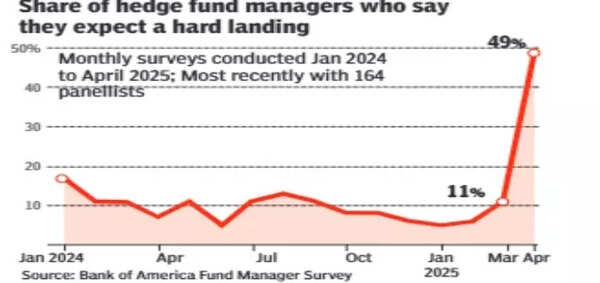The rupee extended its losing streak for the fourth straight session and settled 45 paise lower at 86.71 (provisional) against the U.S. dollar on Wednesday (April 9, 2025), amid escalating tariff turbulence globally even as the Reserve Bank reduced key interest rate by 25 basis points as a growth-stimulus measure.
Even though crude oil prices fell sharply to a record level and the American currency remained weak, the Indian currency stayed under pressure due to incessant outflow of foreign funds and lacklustre sentiment in the domestic equity markets, forex traders said.
At the interbank foreign exchange, the rupee opened at 86.52 and moved between a high of 86.47 and the low of 86.71 against the greenback during intraday, facing extreme volatility. The unit settled at 86.71 (provisional) against the dollar, sharply lower by 45 paise from the previous closing level.
On Tuesday (April 8, 2025), the Indian currency crashed 50 paise to settle at 86.26 against the dollar. This was the steepest single-day decline for the rupee since January 13, when it lost 66 paise.
In the preceding two sessions on Monday and Friday, the rupee had lost 32 paise and 14 paise, respectively.
In the last four trading sessions the rupee has lost 104 paise against the U.S. dollar.
Anuj Choudhary, Research Analyst at Mirae Asset Sharekhan, said the rupee declined amid dented global market sentiments owing to trade war between the U.S. and China after U.S. President Donald Trump imposed an additional 50% tariff on China.
“Weak domestic markets and FII outflows also pressurised the rupee. However, weakness in crude oil prices and a decline in the U.S. dollar index cushioned the downside. RBI cut repo rate by 25 bps to 6%, in line with expectations,” he said, adding, “investors may remain cautious ahead of the inflation data from the U.S. The USD-INR spot price is expected to trade in a range of 86.30 to 86.90.”
RBI’s monetary policy committee on Wednesday (April 9, 2025) decided to slash the key interest rate by 25 basis points, reducing it for the second time in a row, paving the way to cut financing cost and stimulate economic activities.
At the same time, citing global uncertainties over tariff moves the central bank lowered the country’s growth projection for FY26 at 6.5%, from 6.7% estimated earlier.
About RBI’s currency management strategy during a press conference after the latest bi-monthly monetary policy announcement, RBI Governor Sanjay Malhotra said the central bank does not target any level.
“So far as currency management is concerned we do not actually intervene in the currency management. It’s only… for excessive or disruptive volatility that we do. So we do not try to manage or target any reach or band or level of the Indian rupee,” Mr. Malhotra said.
Meanwhile, the dollar index, which gauges the greenback’s strength against a basket of six currencies, was trading 0.70% lower at 101.98.
Brent crude, the global oil benchmark, declined 3.82% to its record low level of $60.42 per barrel in futures trade.
Analysts said the new set of U.S. tariffs including the massive 104% levy announced on Chinese imports effective Wednesday (April 9, 2025), dented sentiments further.
Stock market benchmarks that rebounded from record low levels on Tuesday (April 8, 2025) closed Wednesday’s (April 9, 2025) session significantly lower with the 30-share BSE Sensex ending 379.93 points, or 0.51%, down at 73,847.15, while the Nifty falling 136.70 points, or 0.61%, to 22,399.15 points.
On Monday, both the indices crashed over 5% before closing nearly 3% lower.
Foreign institutional investors (FIIs) offloaded equities worth ₹4,994.24 crore on a net basis on Tuesday (April 8, 2025), according to exchange data.
Published – April 09, 2025 05:00 pm IST



































